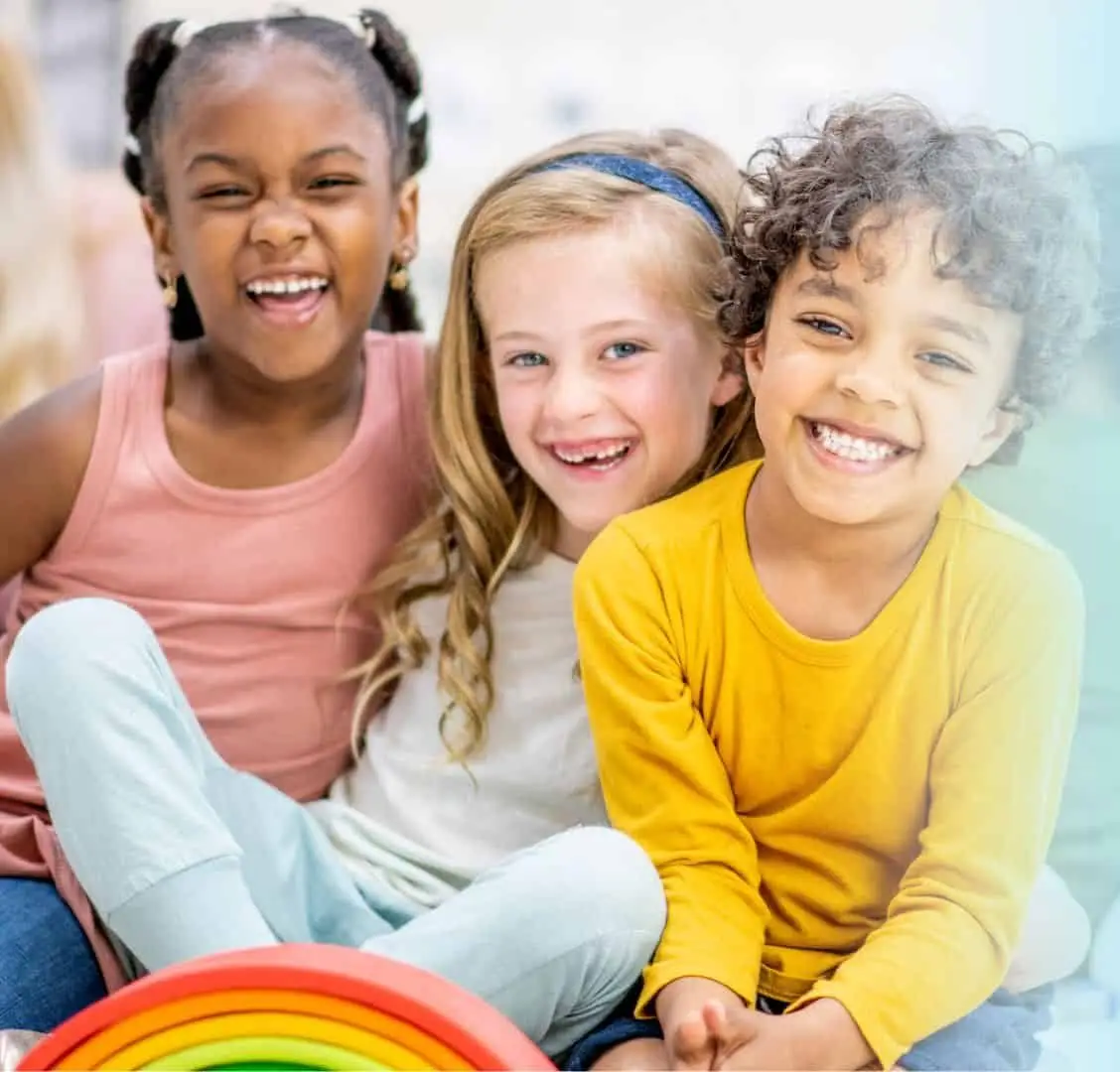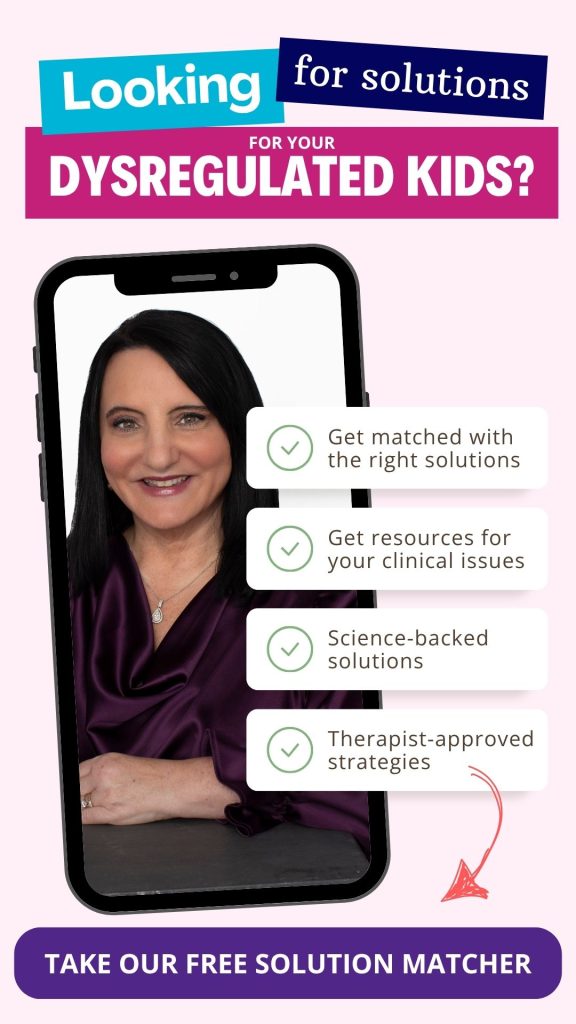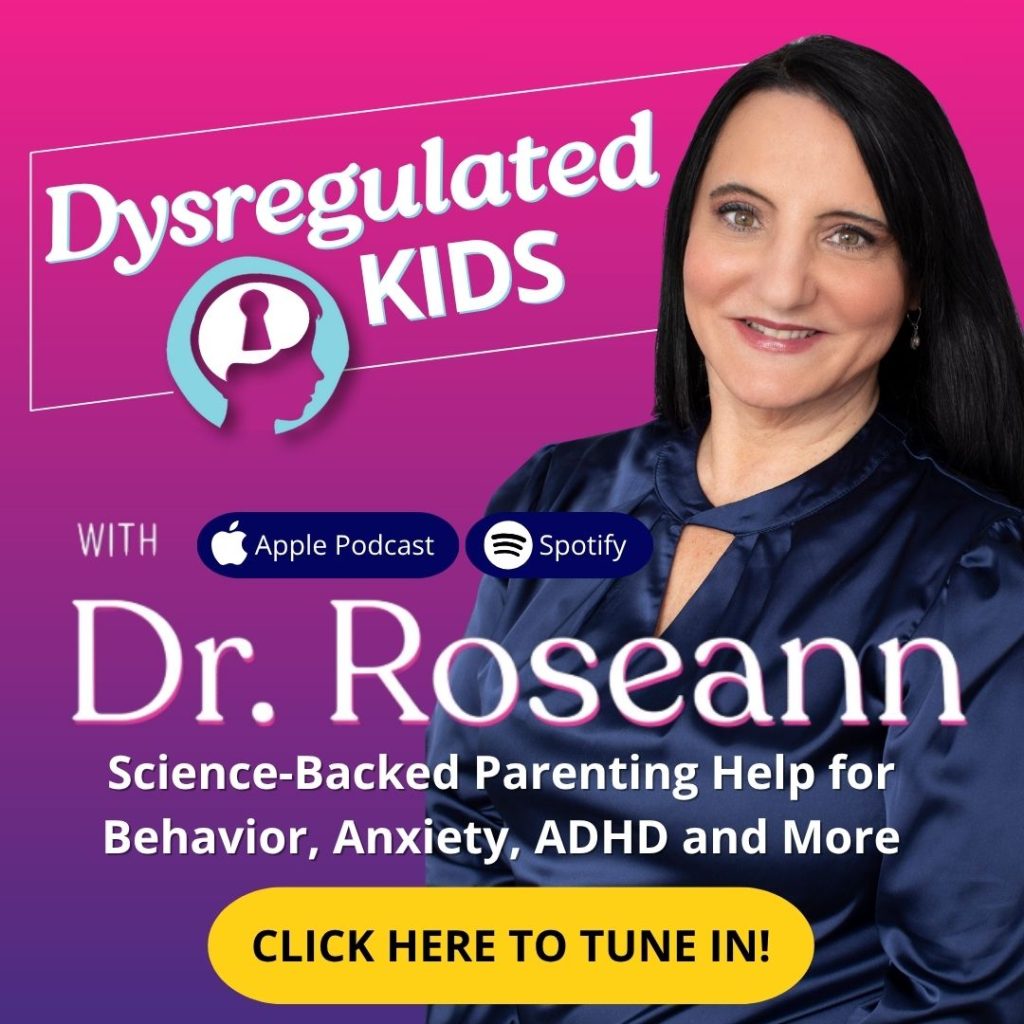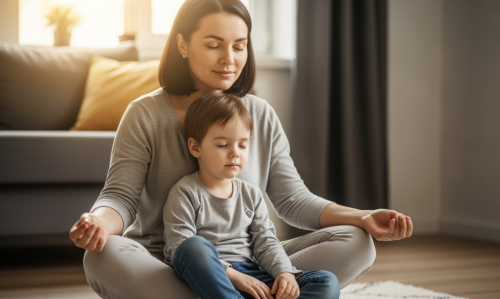If your child’s behavior feels out of control lately—melting down over small things, refusing school, or constantly worrying—you’re not alone. Anxiety is one of the most common mental health struggles kids and teens face today, and it often shows up in confusing ways that can leave even the most attentive parents feeling overwhelmed and unsure of what to do. The good news is that anxiety is treatable. With the right understanding, the right supports, and the right nervous system-focused strategies, your child can find calm and learn lifelong coping skills.

Anxiety in children isn’t just about worry—it’s a full-body experience. When a child’s nervous system is triggered by a mix of environmental, emotional, sensory, or physical stressors, it can create a heightened state of fight, flight, or freeze. Some children are aware of what makes them anxious, while others just feel it without being able to explain it. Either way, it’s uncomfortable, often overwhelming, and needs compassionate support to reset the brain. Knowing how anxiety works is the first step in breaking the cycle and helping your child thrive.
What Are the Signs My Child Needs Anxiety Treatment?
When anxiety starts interfering with a child’s daily life—whether it’s school, friendships, or even sleep—it’s a clear sign that more support is needed. Anxiety in kids often shows up differently than it does in adults, sometimes through meltdowns, avoidance, or physical complaints. It’s easy to miss if you’re not looking for it. By understanding these early signs, you can catch anxiety before it spirals and help your child feel safe and supported.
Common signs include:
- Excessive worry about school, friends, or family
- Meltdowns, tantrums, or frequent crying
- Sleep problems, nightmares, or difficulty falling asleep
- Physical complaints like headaches or stomachaches
- Refusal to attend school or activities
- Frequently ruminating
- Clinginess or separation anxiety
- Avoidance of social situations
Read more: What Are The Signs and Symptoms of Anxiety in Children?

What Causes Anxiety in Children?
Anxiety isn’t a character flaw or the result of “overreacting”—it’s a reflection of how the nervous system responds to stressors. Multiple factors can combine to create a heightened state of fear or worry, often outside the child’s conscious control. Genetics, brain chemistry, environment, trauma, and even physical health can all play a role. Knowing the root causes helps us shift from blame to action—and gives us a path forward to calm the brain.
Anxiety in Children and What Leads to Anxious Kids
| Cause of Anxiety | How It Contributes to Anxiety |
|---|---|
| Genetics | Family history of anxiety or mood disorders |
| Brain Chemistry | Neurotransmitter imbalances affecting regulation |
| Environment | Stress at home, school, or peer conflicts |
| Temperament | Highly sensitive or cautious children |
| Trauma | Past or ongoing emotional or physical stressors |
| Medical Conditions | Neurodevelopmental disorders, gut-brain connection issues |
How Is Anxiety Diagnosed in Kids?
Getting the right diagnosis matters because anxiety symptoms often overlap with other conditions like ADHD, OCD, or executive functioning issues. A proper evaluation looks at the whole child—behavior, emotions, physical health, and brain function—not just the outward symptoms. This ensures that the right interventions are chosen from the start. Early, accurate diagnosis sets the stage for true healing, not just symptom management.
Typical anxiety diagnostic test steps:
- Medical evaluation to rule out physical causes
- Parent and teacher assessments (questionnaires, interviews)
- Clinical evaluation with a psychologist or licensed mental health provider
- Observations of behavior across different settings

What Are the Best Anxiety Treatments for Children?
When it comes to treating anxiety in kids, there’s no one-size-fits-all solution—but the most successful treatments focus on calming the brain first. Brain-based therapies, body-centered practices, and coping skill development all work together to create lasting regulation. It’s about creating a foundation where your child feels safe internally, not just teaching them to “think differently.” When the nervous system feels calm, learning coping skills becomes much easier.
Treatments for Anxiety in Children
| Treatment | What It Helps |
|---|---|
| Neurofeedback | Trains brainwaves to self-regulate and reduce anxiety |
| PEMF Therapy | Calms the nervous system and promotes cellular healing |
| Cognitive Behavioral Therapy (CBT) | Teaches thought and behavior shifts |
| Play Therapy | Builds emotional regulation through safe expression |
| Somatic Therapy | Resets the body's stress response system |
| Meditation and Breathwork | Strengthens mind-body regulation |

Does Therapy Really Help Child Anxiety?
Therapy can be a powerful tool for helping children with anxiety—but only when it addresses both mind and body. Not all therapies are created equal, and traditional talk therapy or EFT tapping alone often isn’t enough for kids whose brains are stuck in overdrive. The best approaches include regulating the nervous system, building coping skills, and involving parents in the healing process. With the right support, therapy can help kids move from fear to confidence.
When Noah, 9, started therapy for anxiety, traditional talk therapy didn’t help much. Once his therapist incorporated play-based coping techniques and breathwork, Noah opened up—and his meltdowns dramatically decreased.
Should My Child Take Medication for Anxiety?
Medication can sometimes play an initially helpful role, especially when symptoms are severe, but it should never be the first or only approach to treating anxiety. Medications like SSRIs can stabilize a dysregulated brain enough to engage in therapy and skill-building. However, they don’t address the underlying causes of anxiety and should always be paired with brain-based therapies. Understanding the pros and cons helps parents make the best, most informed decisions for their child.
Medication for Anxiety In Children
| Medication for Anxiety | What Parents Should Know |
|---|---|
| Pro: Can temporarily stabilize severe symptoms | Helps support a child in a high risk situation |
| Con: Side effects like GI upset, fatigue, irritability | May add physical stress to an already dysregulated system |
| Con: Doesn’t treat the root cause of anxiety | Medication alone won’t retrain the brain for long-term change |
| Con: Risk of rebound anxiety when stopping | Symptoms may return or worsen without brain-based therapies |
What Are Natural Anxiety Treatments for Kids?
Many parents want alternatives to medication—and thankfully, natural approaches can be highly effective for managing anxiety. Brain-based interventions like neurofeedback and PEMF, along with nutritional support, mindfulness, and movement, can significantly calm the nervous system. These approaches don’t just mask symptoms; they help build long-term emotional resilience. Giving your child tools that work with their brain—not against it—sets the stage for lasting healing.
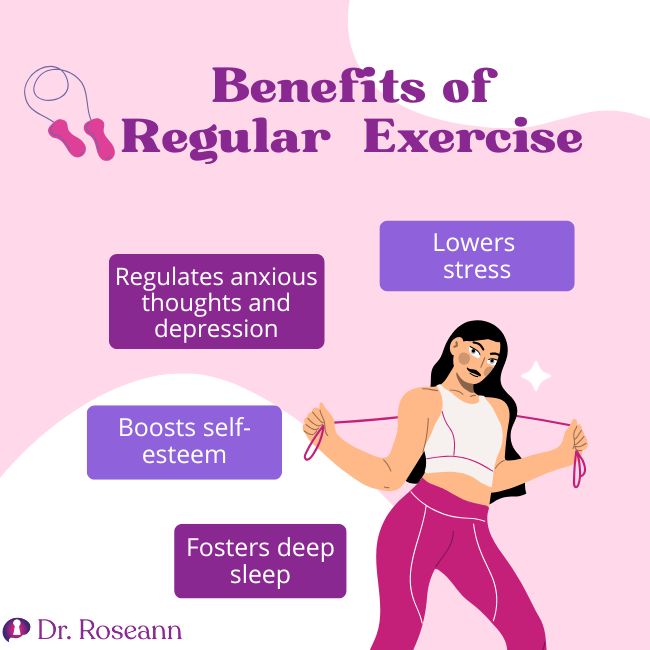
Top natural supports:
- Neurofeedback and PEMF (brain and body-based calming)
- Magnesium supplements (supports relaxation)
- L-Theanine and GABA (balance neurotransmitters)
- Mindfulness and meditation (strengthens emotional control)
- Outdoor exercise (improves mood and reduces cortisol)
“Natural therapies like neurofeedback, magnesium supplementation, and structured breathwork are showing real promise for childhood anxiety management.” — Dr. James Greenblatt, Integrative Psychiatrist

How Can I Help My Child With Anxiety at Home?
As a parent, you have incredible power to shape your child’s healing journey—and small steps at home make a big difference. Kids co-regulate with their caregivers, meaning your calm presence can help reset their anxious brains. Establishing predictable routines, modeling healthy coping strategies, and reinforcing emotional regulation are some of the most powerful things you can do. The best part? You don’t have to be perfect—you just have to be present and willing to learn alongside them.
At-home strategies:
- Follow the REPS Protocol™ (Respirate, Envision, Positivity, Stress Management)
- Use co-regulation: Model calm breathing and coping
- Create routines: Predictability builds safety
- Break down tasks: Tiny steps prevent overwhelm
- Celebrate progress: Praise coping, not just outcomes
When Should I Seek Professional Help for My Child’s Anxiety?
Knowing when to seek professional help can be tough, especially when anxiety symptoms come and go. But if anxiety is starting to limit your child’s life—whether it’s friendships, learning, or emotional well-being—it’s time to get support. Early intervention doesn’t just ease current struggles; it can prevent anxiety from becoming a lifelong pattern. Trust your instincts—getting help early makes all the difference.

What’s the Outlook for Children With Anxiety?

With the right interventions, kids with anxiety don’t just survive—they thrive. Early support helps children learn how to regulate their nervous systems, manage their emotions, and build resilience for a lifetime. Healing from anxiety isn’t about erasing fear; it’s about giving your child the tools to handle challenges with confidence. Hope, growth, and success are absolutely possible, and it all starts with calming the brain.
Supporting Your Anxious Child
If your child is struggling with anxiety, take heart—it’s not a reflection of your parenting, but a sign of a dysregulated brain that needs support. Anxiety doesn’t define who your child is or who they are becoming.
With early intervention, compassion, and brain-based strategies that truly calm the nervous system, your child can move from fear and overwhelm to confidence and resilience. Healing takes time, but every small step matters—and with the right tools, lasting change is absolutely possible.
You are not alone. Hope is real. Getting control of anxiety is possible.
FAQs About Anxiety Treatment for Children
How long does it take for anxiety treatments to work?
Parents often wonder how quickly they’ll see results after starting treatment. Many kids show meaningful improvements within 8–12 weeks, especially when interventions focus on calming the nervous system, not just masking symptoms.
Can diet really affect child anxiety?
Absolutely! A healthy gut and stable blood sugar can significantly impact mood regulation. Low magnesium, poor nutrition, and inflammation all worsen anxiety symptoms in kids.
Is anxiety common in kids with ADHD?
Very common. Research shows that about 30–50% of children with ADHD also struggle with anxiety. The two conditions often fuel each other, which is why calming the brain first is so important.
Can my child “grow out” of anxiety?
Not typically without support. Without intervention, anxiety tends to persist and can even worsen into adulthood. Early, brain-based help can teach lifelong regulation skills.
What are the risks of untreated anxiety?
Without treatment, anxiety can lead to more serious issues like depression, school avoidance, poor academic performance, and low self-esteem. Addressing it early gives kids their best chance at thriving.
Citations:
MedlinePlus. (2022). Anxiety. U.S. National Library of Medicine. https://medlineplus.gov/anxiety.html
Messmer, K. (2019). Art and play therapy for children with anxiety (Undergraduate Honors Thesis). Long Island University. https://digitalcommons.liu.edu/post_honors_theses/73/
National Institute of Mental Health. (2019). Anxiety disorders. U.S. Department of Health and Human Services. https://www.nimh.nih.gov/health/topics/anxiety-disorders
National Institute of Mental Health. (2017). Any anxiety disorder. U.S. Department of Health and Human Services. https://www.nimh.nih.gov/health/statistics/any-anxiety-disorder
Always remember… “Calm Brain, Happy Family™”
Disclaimer: This article is not intended to give health advice and it is recommended to consult with a physician before beginning any new wellness regime. *The effectiveness of diagnosis and treatment vary by patient and condition. Dr. Roseann Capanna-Hodge, LLC does not guarantee certain results.
Are you looking for SOLUTIONS for your struggling child or teen?
Dr. Roseann and her team are all about science-backed solutions, so you are in the right place!
© Roseann-Capanna-Hodge, LLC 2025

